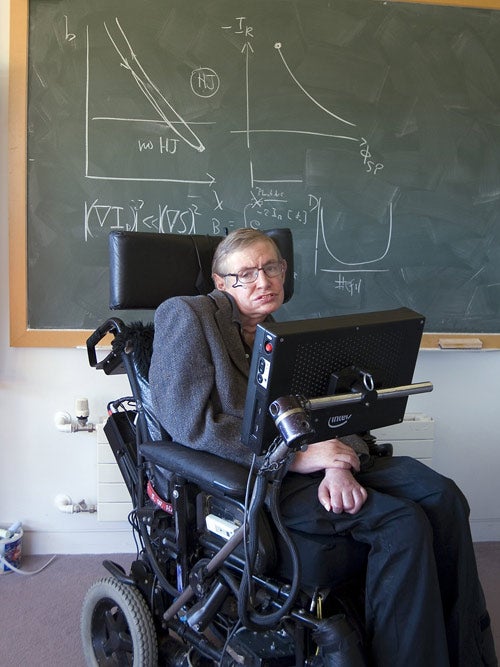Breakthrough in the study of motor neurone disease

A breakthrough in understanding one of the most mysterious disorders of the nervous system has been announced by scientists studying the genetic basis of motor neurone disease.
It is only the second time in more than a century that scientists have discovered something important about the fundamental nature of the debilitating disease, which affects about 5,000 people in Britain. It almost always proves fatal.
Once it strikes, the symptoms become rapidly worse. The disease can affect any adult at any time, although there is also an inherited version which runs in families. Those who have been affected include the actor David Niven, the football manager Don Revie and the cosmologist Stephen Hawking, who has defied statistics by living with the disease for more than 35 years.
The researchers discovered mutations in a particular gene that can trigger destruction of the body's "motor" nerves, which send instructions from the brain and spinal cord to the muscles. This leads to gradual paralysis and death.
The findings are seen as a major milestone in the understanding of motor neurone disease, and more significant than a similar discovery in 1993 which led to an explosion of interest and research into the condition.
Although scientists are cautious about predicting a future cure or treatment, they emphasised that the latest discovery will accelerate their understanding of a disease that has defied the many attempts to unravel its complex origins.
"A cure for any neurological disease is a long way off ... It's really hard to say how far off it is, but this is certainly a major leap forward in that direction," said Professor Chris Shaw, a neuroscientist at King's College London, who led the latest study.
An extended English family with a history of motor neurone disease helped the scientists to locate the gene – and its mutations. They provided the clues that allowed the scientists to confirm that small changes to the DNA of the human genome are enough to trigger the disease.
The gene is responsible for a protein called TDP-43 which builds up inside the nerve cells – the motor neurones – of affected patients. The study, published in the journal Science, showed that the build-up of protein is not merely a harmless side effect of the disease, but likely to be the reason why the neurones eventually die.
"The discovery of gene mutations in motor neurone disease places TDP-43 back in centre stage as a cause of motor neurone degeneration, and not just collateral damage," Professor Shaw said. "Critically, the mutations give scientists around the world a new tool to explore the disease process and develop new therapies."
Although fewer than 10 per cent of patients have the familial form of the disease, the scientists found that 95 per cent of all sufferers show a build-up of the TDP-43 protein inside their motor neurone cells – indicating that the discovery has a wider significance for patients with the sporadic, non-familial form.
Brian Dickie, director of research at the Motor Neurone Disease Association, said the discovery of the genetic mutations in the TDP-43 gene will allow scientists to make animal models of the disease. These could then be used to test new drugs and treatments.
Asked whether the latest discovery will lead to a cure, Dr Dickie said: "That's our ultimate goal. This is a springboard to an increased understanding of the disease and it is only by understanding it that we will eventually find a cure."
Anatomy of a terrifying illness
* Motor neurone disease affects about 5,000 people in Britain and about five patients a day die of the condition. It is a progressive disease that causes total paralysis of the body.
* The disorder is caused by the death of the delicate nerve cells leading from the brain and spinal cord to the muscles. Without these motor neurone cells, the muscles cannot function properly.
* After someone is diagnosed, life expectancy is two to five years. The scientist Stephen Hawking, who has lived with the disease for more than 35 years, is a notable exception.
Join our commenting forum
Join thought-provoking conversations, follow other Independent readers and see their replies
Comments
Bookmark popover
Removed from bookmarks